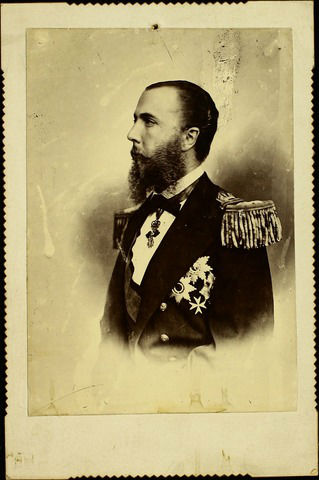
by Linda King
On October 2, 1863 a sombre, unusual group of ten men, one of them a priest from Puebla, made their way towards a palace on the Adriatic coast, near Trieste, in Italy's extreme northeast. The palace was home to Archduke Ferdinand Maximilian Joseph of Austria and his wife, Princess Marie, the daughter of the king of Belgium. These ten men were a commission of Mexican conservatives. They had made their long journey to persuade Maximilian to accept nothing less than the crown of a new Mexican Empire.
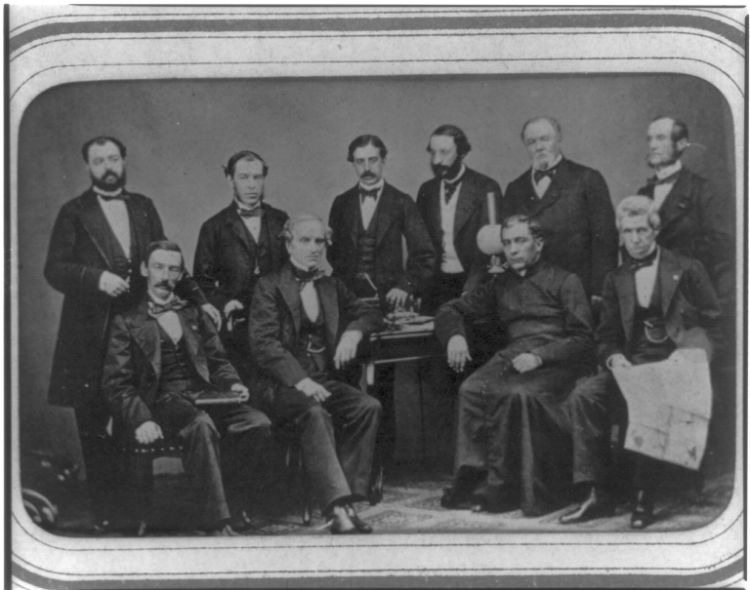
Two years earlier Mexico had been invaded by France. There had been fierce fighting between the Republican forces of then President Juarez and the French troops. The pretext for the French invasion had been to claim unpaid interest on Mexico's international debt. In reality Napoleon III saw an opportunity to establish a French empire in the Americas, particularly since the US was busily engaged in its own civil war. Conservative hacienda owners, supported by elements of the Catholic church, whose interests Juarez had sought to curb, formed an alliance with the French. Maximilian was the candidate chosen to lead the alliance.
Maximilian accepted, arriving in Veracuz in May 1864. Once installed in Mexico City, he was impatient to get to know his new empire. Accordingly, he embarked on a tour, with the State of Guanajuato high on his list of places to visit.
The rains had been heavy that year. Although the coach, built in England, was specially designed to withstand the country roads, he often had to walk or ride by mule along the muddy tracks while his guards freed up the horses and carriage. They had left Mexico City on August 10. They entered San Miguel on September 13.
The town of San Miguel Allende was holding its breath. The facades of houses and the central streets were decked out in floral arrangements; banners, flags and tapestries hung out on balconies. Young women were grouped together, looking out of windows, giggling and calling to friends below. A triumphal arch made of wood, plaster and fabric that featured a statue of the Emperor had been constructed on the corner of Calle Canal. Soon, however, with the noise of the royal procession, the buzz of the crowd and the shouts of “ He’s here!” “There he goes!” “Viva Maximiliano,” “Viva el Emperador” echoing across the Jardin, the statue became superfluous. For here, in the flesh, walking the streets of San Miguel, was the man himself.
Tall of stature, blue-eyed, with a robust red beard and exuberant sideburns, he made an impressive figure. He stood out from the crowd. The entourage proceeded slowly towards Calle San Francisco where he was to stay, in the house of one Jose Maria Vazquez. His arrival was greeted with flourishing speeches of welcome from local dignitaries.
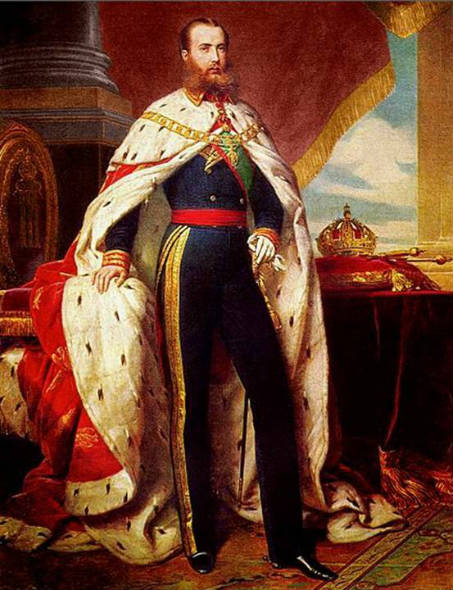
“My beloved angel,” he wrote to his wife, Empress Carlotta, “We were happy to arrive in San Miguel Allende about three hours ago. The road through the mountains to get here is delightful, as is the city itself, which is in a pretty setting. Once more the welcome reception was wonderful and extremely cordial...” The countryside, green from the heavy seasonal rains, reminded him of the Apennine mountain scenery of Italy.
Once refreshed from his journey, Maximilian left the house in San Francisco street, striding across the Jardin to the church of the Parroquia. All the time a crowd pushed and shoved along with him. In the atrium of the Parroquia a processional canopy was held up to cover both the Emperor and Jose Maria de Jesus Diez de Sollano, the renowned Bishop of the Archdiocese of Leon, as they made their way slowly to the interior of the Parroquia.
Accompanied by the bishop, to the sound of the orchestra intoning Domine Salvem fac Imperatorem (God Save the Emperor), he proceeded slowly inside. To the right of the main altar a throne had been set up for the royal personage. After prayers, the choir sang Te Deum. Maximilian solemnly rose from the throne to kneel in front of the altar where the bishop gave him his blessing.
A ceremonial banquet was held after the service. Ladies of the town vied with each other to prepare the best desserts for the Emperor, who was particularly known for his sweet tooth. Guests were serenaded by an orchestra, several choral groups and solo singers. Maximilian himself gave a rousing speech in which, with tears in his eyes, he thanked his hosts and the townspeople for their enthusiastic support and promised to return soon, next time bringing along Empress Carlotta. That afternoon, in the tradition of European royalty, he began a series of visits to local institutions including the jail, the school and the hospital. Then the heavy summer rains forced him to retire.
The next day he awakened to the strains of a choir serenading him from the street. The emperor emerged on to the balcony to greet and thank them. Then he continued his visits. He stopped at the school, taking gifts for the children and the teachers. He went on to another reception, this time in Parque Guadiana, which had been appropriately decorated for the imperial visit. In the evening there were fireworks and a formal ball. The central streets of the town were illuminated by glowing lanterns hanging from posts.
Early on the morning of the August 15, accompanied by clergy, local government officials and townspeople, Maximilian set off on foot. At the outskirts of San Miguel he boarded the royal carriage and proceeded on the road to Dolores Hidalgo, where that night, he was due to give the Grito from the house where Hidalgo had proclaimed the independence of the country 50 or so years earlier. Maximilian would be the first ruler to do so from that balcony in Dolores Hidalgo. He would unveil a memorial plaque fixed to a side wall of the house, dated September 18, 1864 .
However, by 1865, with the American Civil War concluded, France came under US pressure, under the terms of the Monroe doctrine to withdraw from Mexico. Napoleon III acquiesced and began the withdrawal of French troops, leaving Maximilian without moral or military support. Maximilian was urged to return to Europe, but he refused to do so.
Somewhat naively Maximilian thought he could unite the liberal and conservative forces in Mexico. He had offered, unsuccessfully, to make Benito Juarez the prime minister. He did included several of the key Independence figures in his cabinet. Also, much to the irritation of the conservatives, he retained many of Juarez's reforms.
By March 1867, however, Maximilian was to be found fighting for his life alongside the conservative forces in the siege of Queretaro, a battle which after 2 months was lost to the Republicans. On the orders of President Juarez, Maximilian faced court martial. He was found guilty and condemned to death. He faced execution by firing squad in the hills outside Queretaro. “Mexicans!” he called out in Spanish before the bullets hit, “I die for a just cause: that of the independence and freedom of Mexico! May the blood that is spilt help to heal the scars of my new homeland. Viva Mexico!”
So was the sad fate of a European prince who had fallen in love with Mexico, of the emperor who visited San Miguel.
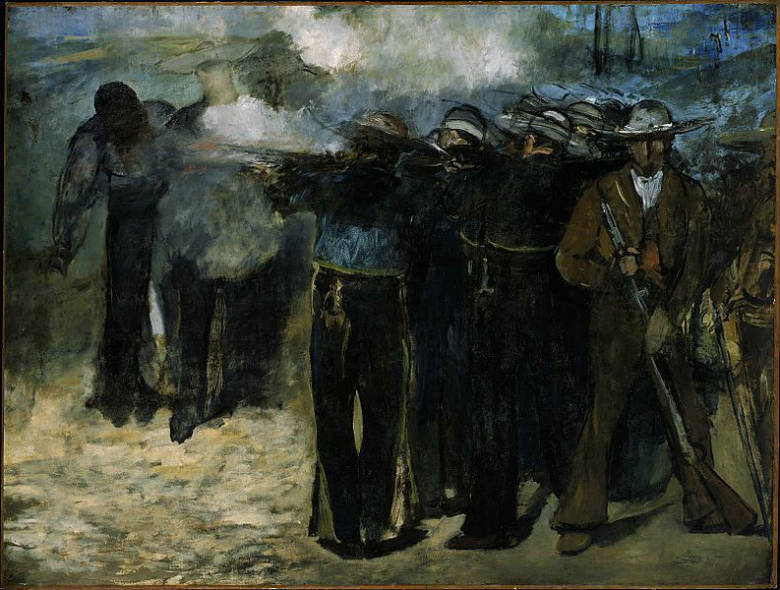
**************
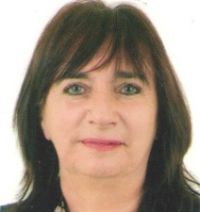
Dr Linda King is an art historian and a social anthropologist. She recently retired from UNESCO where she worked for almost two decades leading international policy work on education and culture. She has been a visiting fellow in the universities of Harvard, London and Oxford and has published books and articles on Mexico, and on culture and education. She is currently writing a book on Mexico City.
|